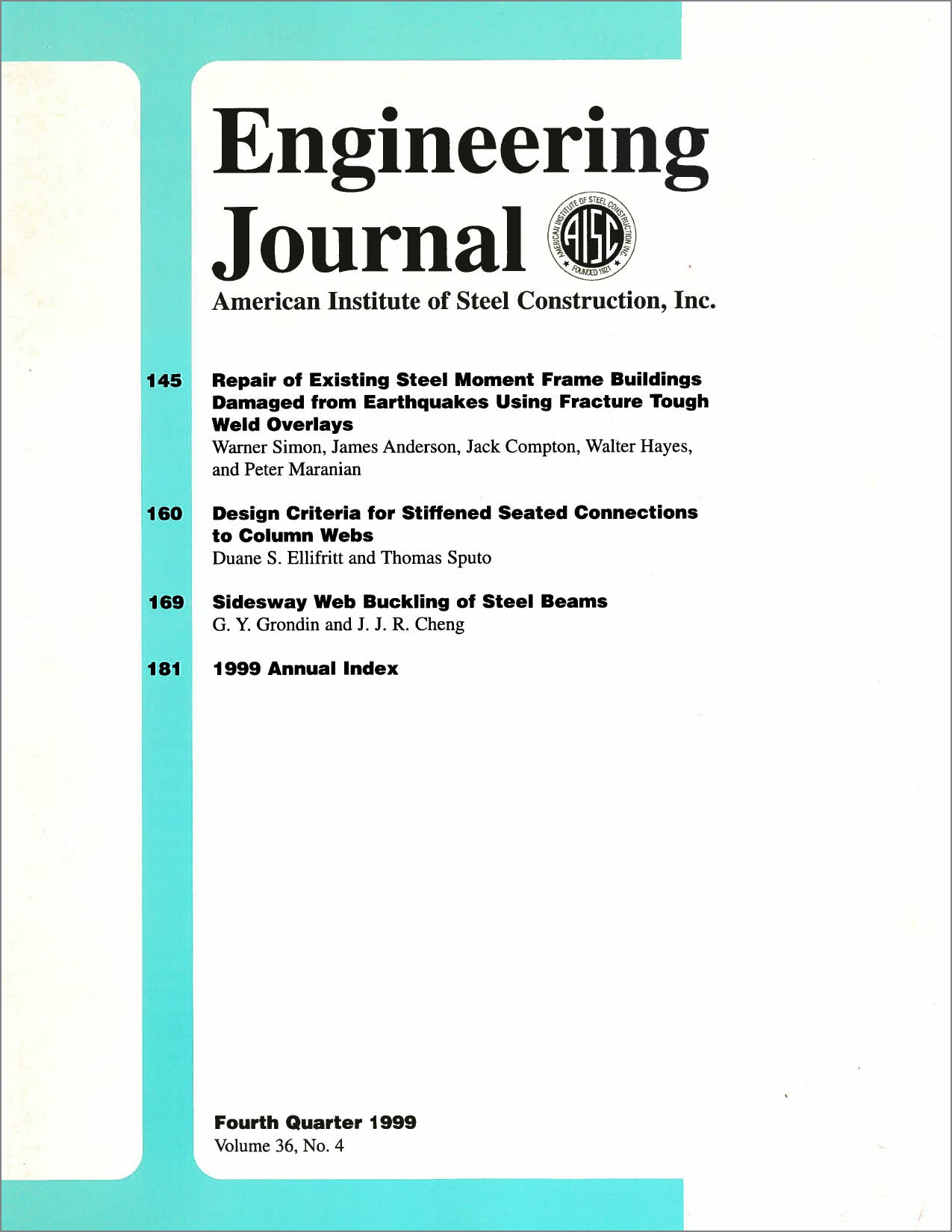Sidesway Web Buckling of Steel Beams
DOI:
https://doi.org/10.62913/engj.v36i4.728Abstract
The lateral stability of the tension flange of doubly symmetric beams with the compression flange braced against lateral movement was investigated experimentally and numerically. Steel beams of W360X33 (W14X22) and W360X39 (W14X26) cross-section were tested to failure. Lateral supports were provided to the compression flange to prevent lateral-torsional buckling while the tension flange was free to move laterally over its entire length. Failure took the form of sidesway web buckling. A numerical model incorporating the effect of residual stresses, initial imperfections, large displacements and material yielding was implemented using the finite element method. The model was validated by comparison with the test results. The current AISC design specification for sidesway web buckling was evaluated by comparing predicted capacities with the test results and the results of a limited parametric study performed with the numerical model. It was found that the sidesway web buckling capacity predicted using the AISC model is very conservative. Less conservative, but safe, prediction equations are proposed as possible alternatives to the current AISC equation.

